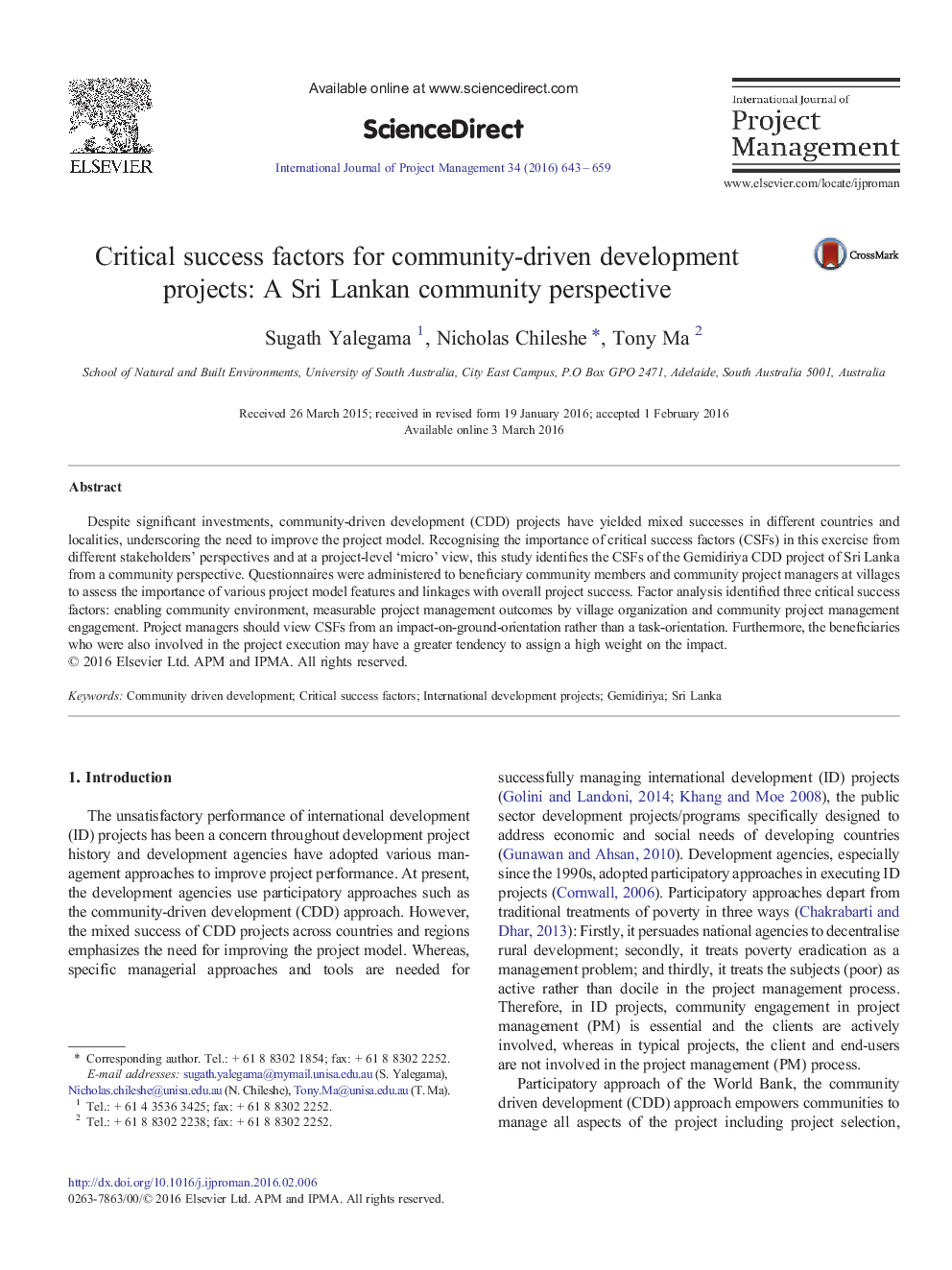| کد مقاله | کد نشریه | سال انتشار | مقاله انگلیسی | نسخه تمام متن |
|---|---|---|---|---|
| 275675 | 1429664 | 2016 | 17 صفحه PDF | دانلود رایگان |
• Critically reviews the literature on community driven development approaches
• Identifies critical success factors (CSFs) for community-driven projects in Sri Lanka.
• Enabling community environment, measurable project management outcomes by village organisation and community project management engagement identified as CSFs
• CSFs are mostly ‘impact-on-the-ground’ when viewed from a community perspective.
• The results are expected to enhance project success of international development projects that adopt the community driven development approach.
Despite significant investments, community-driven development (CDD) projects have yielded mixed successes in different countries and localities, underscoring the need to improve the project model. Recognising the importance of critical success factors (CSFs) in this exercise from different stakeholders’ perspectives and at a project-level ‘micro’ view, this study identifies the CSFs of the Gemidiriya CDD project of Sri Lanka from a community perspective. Questionnaires were administered to beneficiary community members and community project managers at villages to assess the importance of various project model features and linkages with overall project success. Factor analysis identified three critical success factors: enabling community environment, measurable project management outcomes by village organization and community project management engagement. Project managers should view CSFs from an impact-on-ground-orientation rather than a task-orientation. Furthermore, the beneficiaries who were also involved in the project execution may have a greater tendency to assign a high weight on the impact.
Figure optionsDownload as PowerPoint slide
Journal: International Journal of Project Management - Volume 34, Issue 4, May 2016, Pages 643–659
